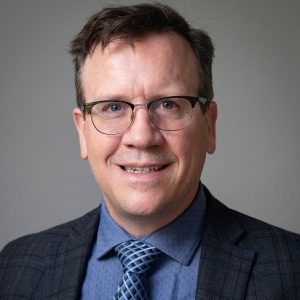 McGowan Institute for Regenerative Medicine affiliated faculty member Douglas Weber, PhD (pictured), Professor of Mechanical Engineering and Neuroscience at Carnegie Mellon University, is the co-principal investigator on the recently funded project entitled, “Spinal Cord Stimulation to Improve Motor Function in People with Post-Stroke Hemiplegia.” The 3-year project began on September 8, 2022, and was funded by the National Institute of Neurological Disorders and Stroke.
McGowan Institute for Regenerative Medicine affiliated faculty member Douglas Weber, PhD (pictured), Professor of Mechanical Engineering and Neuroscience at Carnegie Mellon University, is the co-principal investigator on the recently funded project entitled, “Spinal Cord Stimulation to Improve Motor Function in People with Post-Stroke Hemiplegia.” The 3-year project began on September 8, 2022, and was funded by the National Institute of Neurological Disorders and Stroke.
In the US almost 800,000 people have a stroke every year leaving more than half of these people with permanent arm and hand motor deficits (hemiparesis). Unfortunately, the only option available today is intense physical therapy, which improves motor performances but is not effective for many with moderate and severe post-stroke arm hemiparesis. In this project Dr. Weber and his team will test the efficacy of a novel neurostimulation system targeting the cervical spinal cord in combination with physical therapy to increase strength, ameliorate motor function, and improve motor recovery in people with chronic post-stroke hemiparesis.
The abstract of this project reads:
Motivation: In the US, almost 800,000 people have a stroke every year. Unfortunately, despite intense physio-therapy stroke survivors retain permanent arm motor deficits, some complete hemiparesis. Project Goal: Here we aim at testing the efficacy of a system delivering electrical neurostimulation to the cervical spinal cord (SCS) to improve arm and hand motor control in people with chronic post-stroke hemiparesis. Hypothesis: SCS of the lumbosacral circuits below the lesion immediately restored leg movements and weight bearing locomotion in humans with spinal cord injury by increasing strength and function. Moreover, SCS combined to physical therapy led to long-term improvements that improved motor control even when the stimulation was turned off. In stroke the spinal circuits controlling arm and hand movements are intact and located below the brain lesion. Therefore, we hypothesize that SCS targeting the cervical spinal cord will enable people with post-stroke hemiparesis to produce functional arm and hand movements, and that these improvements will enable the administration of a tailored behavioral training leading to superior long-term motor recovery. Preliminary data: We implanted a human subject with post-stroke hemiparesis with lateral cervical spinal leads and showed that SCS substantially improved, strength at every joint of the arm and hand, range of motions, dexterity, clinical assessment scales (Fugl-Meyer +13) and functional abilities. Moreover, SCS did not induce pain or discomfort at intensities that were necessary to obtain motor improvements. Finally, our industrial partner (CorTec GmbH), is finalizing the tests to obtain IDE approval of a fully implantable pulse generator tailored to SCS of the cervical spinal cord. Approach: In the UG3 phase of our proposal (years 1 to 3) we will finalize the necessary validation on our implantable cervical stimulator to obtain IDE approval. In parallel we will perform a pilot 30- day trial with conventional clinical leads used off-label in subjects with stroke to optimize SCS implant procedures and SCS parameters for maximization of arm functional movements. Finally, in the last 2 years during the UH3 phase we will execute an early feasibility study testing the efficacy of cervical SCS in combination with 4 weeks of physical therapy to improve arm motor control in up to 20 subjects with chronic post-stroke hemiparesis. Perspective: Our clinical trial will be the first to assess the efficacy of neurostimulation therapies targeting the spinal cord in patients with severe hemiparesis, potentially leading to a paradigm-shift in stroke rehabilitation.
Congratulations, Dr. Weber!
Read more…
